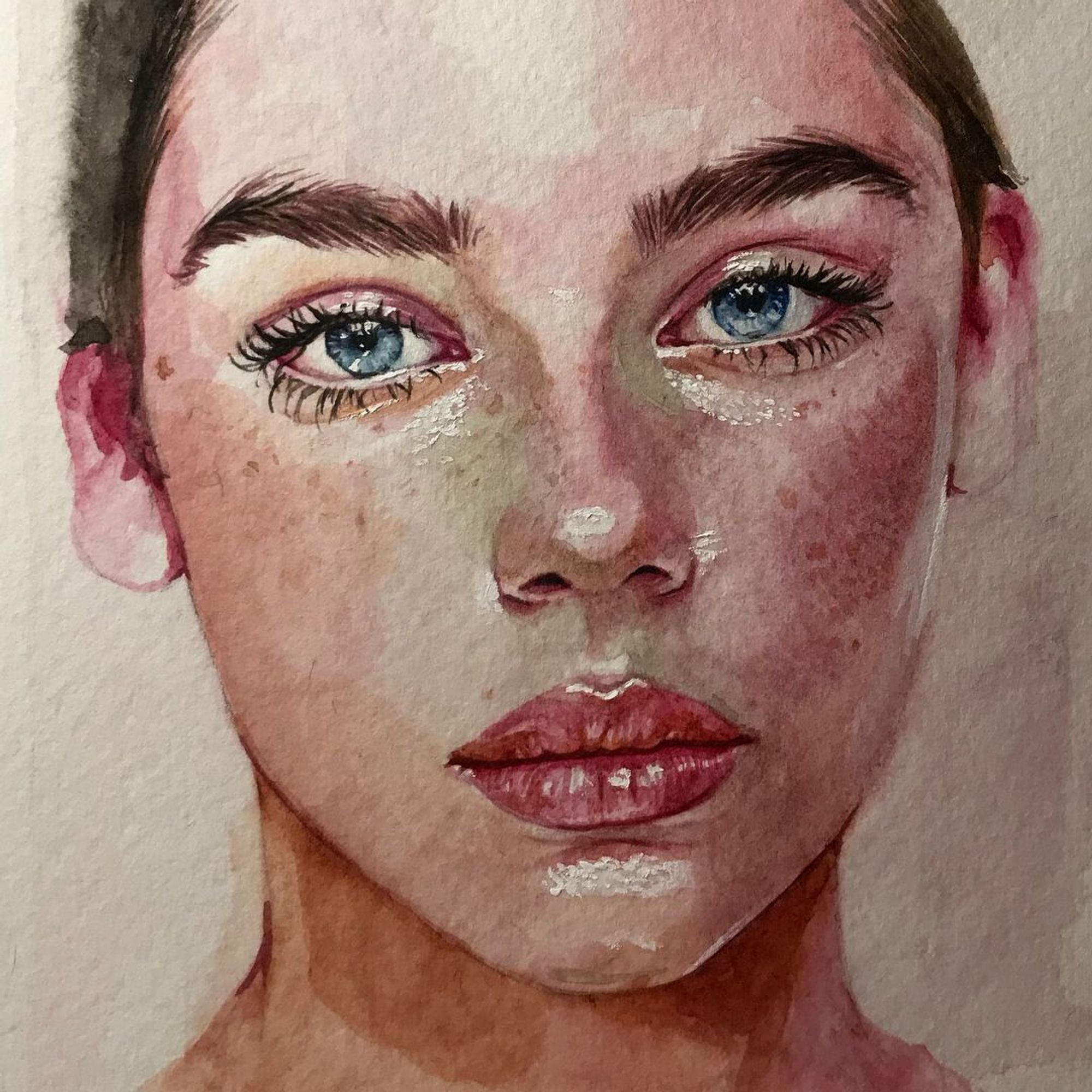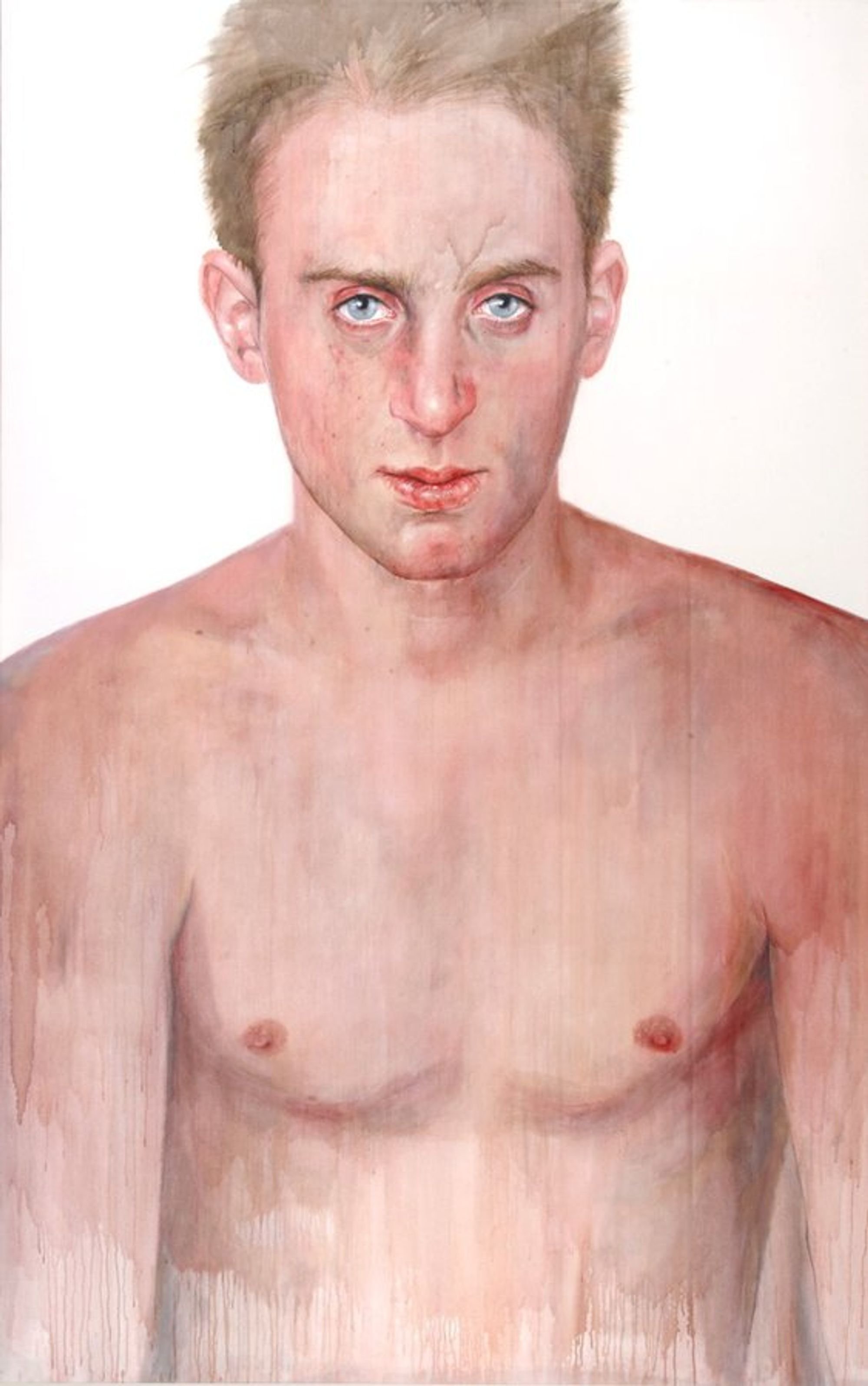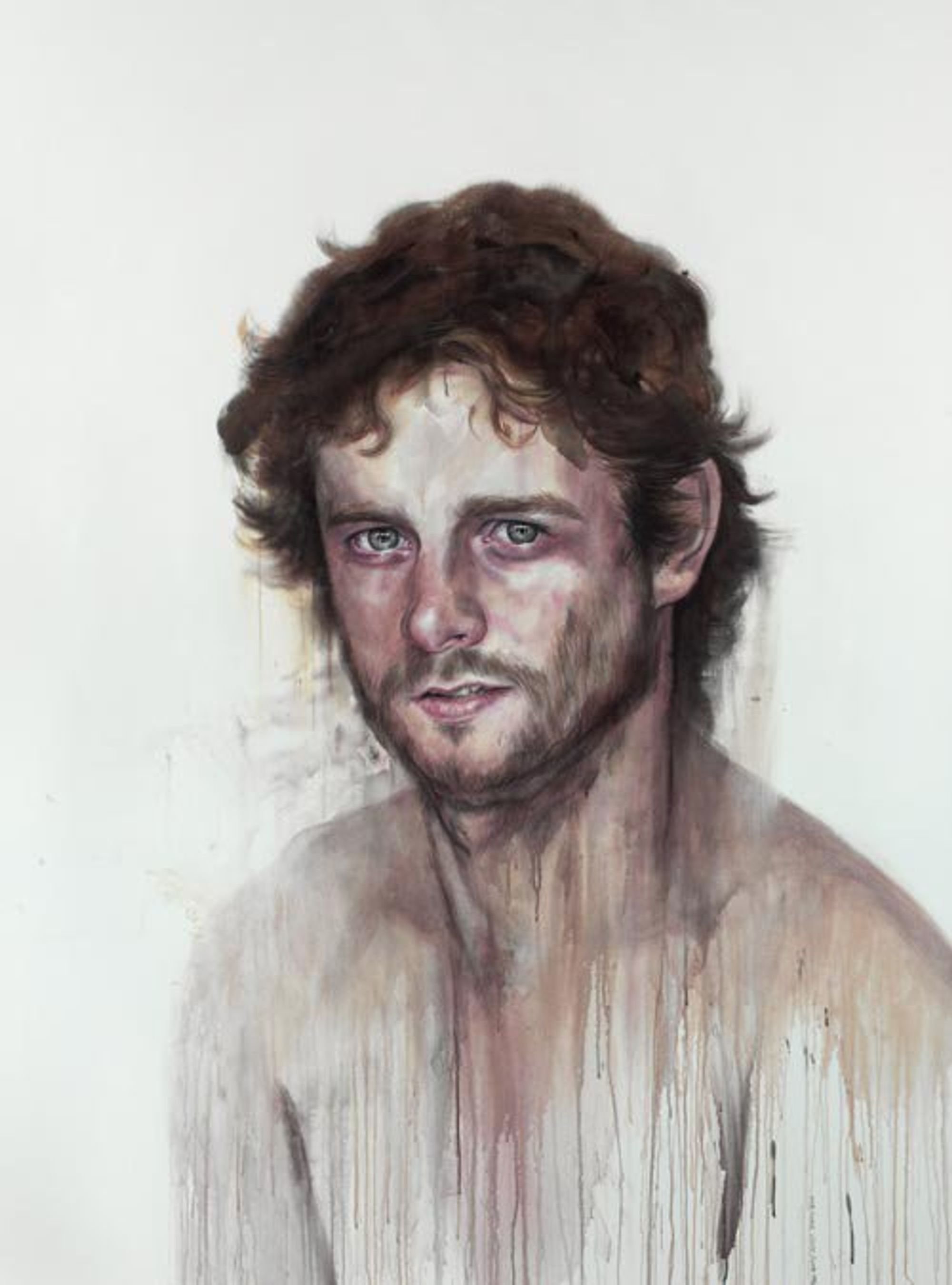Why is watercolour so underrepresented in the Archibald Prize?
Moby Dickens by Blak Douglas took out the 2022 Archibald Prize
As May rolls around each year, speculation begins about who will be crowned the latest Archibald Prize winner. Will it be a woman or a man? An older or younger artist? A portrait of an actor, musician, or politician? Will the $100,000 prize money be given for a portrait of someone from an Indigenous or ethnic background? One thing is for sure though – it's highly unlikely to be a watercolour painting.
Administered by the Art Gallery of New South Wales, there is nothing stopping watercolourists from entering the competition as the official rule book allows for portraits to be painted in any medium (eg oil, acrylic, watercolour, mixed media).
However, watercolour, despite its long and rich history in art, is rarely seen in the Archibald Prize. This may be due to its perceived fragility and lack of permanence compared to oil paintings or other mediums. Another factor could be that some judges may find it difficult to appreciate a watercolour painting for its technical virtuosity, as well as its more ethereal qualities. Great watercolour paintings can have an almost dreamlike quality that may not always be appreciated by judges of a prize like the Archibald.
In this blog post, we will explore why watercolour is underrepresented in the Archibald Prize and discuss how aspiring watercolourists can make their mark in the world of portraiture.
Is watercolour capable of conveying the same depth and emotion as other mediums?
The Archibald, Wynne, and Sulman Prize are a trio of major prizes open to Australian watercolourists.
Absolutely. Watercolour can be used to create incredibly detailed portraits with exquisite brushwork and delicate washes of colour. The thin, transparent layers of watercolour paint allow for more subtle shifts in light and shade than would be achievable with oil paints or acrylics.
Despite the fact that watercolour is rarely seen in the Archibald Prize, there have been notable occurrences of its inclusion. One such example is Cherry Hood's portrait of acclaimed Australian pianist Simon Tedeschi which was awarded the 2002 Archibald Prize. This painting of the young virtuoso showcases Hood's mastery of the watercolour medium. From the lifelike piercing blue eyes to the intentional drip marks, Hood manages to capture a tender side of the subject not often seen in traditional portraiture. Standing at 3.2 metres tall and 1.9 metres wide, this painting is a testament to the power of the watercolour medium on a large-scale.
Why is watercolour not seen as often in the Archibald Prize?
When it comes to watercolour, Archibald Prize winner Cherry Hood is a master of the medium.
A likely explanation is that watercolour portraits are often seen as less striking than those executed with a heavier medium, such as oil or acrylic paints. Judges of the Archibald Prize may be reluctant to award the prestigious prize to a painting that they feel does not make an immediate impact.
In this way, watercolour is often seen as the 'poor cousin' of oil painting, and its lack of representation in the Archibald Prize could be symptomatic of this attitude. However, its unique ability to capture light and atmosphere should not be underestimated. In the world of portraiture, the ethereal, almost dreamlike qualities of watercolour can be used to great effect. It offers a softness and lightness that cannot be achieved with other mediums, and these qualities can create a more intimate connection between the subject and viewer.
The Art Gallery of NSW presents three major prizes each year: The Archibald, The Wynne Prize, and The Sulman Prize. Like the Archibald, the Wynne and Sulman Prizes are open to any kind of artwork, but The Wynne Prize more specifically honours works in watercolour. This prize offers recognition for artists who work with this medium, and it provides an opportunity for viewers to appreciate the power and beauty of watercolour landscape painting.
What can we learn from Hood's success?
Archibald winner Cherry Hood was recognised as a finalist by the Art Gallery of NSW in 2007 for this portrait of artist Ben Quilty.
Hood's success is a reminder that watercolour should not be underestimated as a medium for portraiture. Her other works, such as the portrait of fellow artist Ben Quilty, which was a finalist in the 2007 Archibald Prize, demonstrate how watercolour can be used to capture subtle nuances of character and emotion.
What a lot of viewers may not be aware of is that the softer tonal values and subtle textures achieved in watercolour can actually create a more sophisticated level of realism. This was certainly true of Hood's portrait, which demonstrates how watercolour can be used to great effect in achieving fine details and textures in skin tones.
By taking the time to experiment with the medium, artists can create captivating portraits that strike a unique balance between realism and abstraction. Ultimately, Hood's success reflects the importance of pushing boundaries and thinking outside the box when creating art. This is an important lesson for any artist working with watercolour.
Final thoughts
Ultimately, Hood's success serves as a reminder of how versatile and powerful this medium can be in achieving captivating results. By mastering the nuances of the medium, artists have the potential to create compelling works that really capture the essence of their subject. For too long, watercolour has been underrated as a medium for portraiture, but Hood's success is a powerful reminder to all artists that experimentation and innovation are the keys to creating compelling portraits with watercolour. With dedication and practice, any artist can create stunning works of art that evoke emotion and connection.
As a professional watercolour artist, I am constantly inspired how much freedom the medium offers me in my work. I am continually discovering new ways to take advantage of its unique characteristics and create works of art that capture the essence of the subject in a beautiful way. For anyone looking to explore the potential of watercolour, I highly recommend taking lessons from a professional watercolour artist who is well versed in the medium. With the right instruction, you can unlock your own potential for creating stunning artworks using watercolour.



